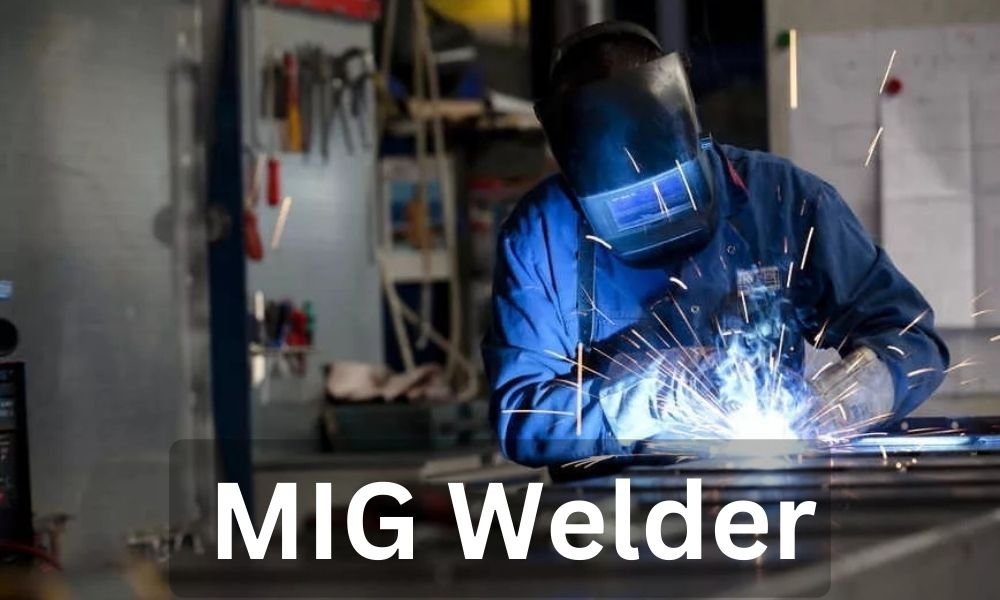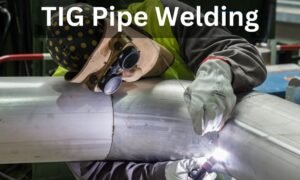MIG Welder, or Metal Inert Gas welding, is a popular welding process where an electric arc forms between a consumable wire electrode and the workpiece metal, causing them to melt and join. It’s known for its speed, efficiency, and ability to produce high-quality welds, making it a favorite among both hobbyists and professionals.
History of MIG Welding
Origins and Development
MIG welding was first developed in the 1940s to meet the demands of the wartime production boom. It revolutionized welding by introducing a continuous wire feed and shielding gas, which protected the weld from atmospheric contamination, resulting in cleaner and stronger welds. We will guide you completely about how does MIG welding work.
Key Milestones in MIG Welding Technology
Over the decades, MIG welding technology has seen significant advancements. From the introduction of semi-automatic and automatic MIG welders to innovations in wire feed systems and power sources, these developments have continuously improved the efficiency and versatility of MIG welding.
How a MIG Welder Works
Basic Components
A MIG welder consists of several key components: a power source, a wire feed system, a welding gun, and a shielding gas supply. The power source provides the necessary electrical energy, while the wire feed system delivers the consumable electrode to the weld pool. The welding gun directs the wire and shielding gas to the weld area, protecting it from contamination.
The Welding Process Explained
The MIG welding process begins with striking an arc between the wire electrode and the workpiece. The heat generated by the arc melts both the wire and the workpiece, allowing them to fuse together. The shielding gas, typically argon or a mix of gases, flows through the gun to protect the weld from atmospheric contaminants.
Types of MIG Welder
Manual MIG Welder
Manual MIG welders require the operator to control the welding process, making adjustments as needed. These are common in small shops and among hobbyists due to their simplicity and affordability.
Semi-Automatic MIG Welder
Semi-automatic MIG welders automate some aspects of the welding process, such as wire feed speed, while still requiring manual operation. These are popular in industrial settings where precision and consistency are crucial.
Automatic MIG Welder
Automatic MIG welders are fully automated systems used in high-volume production environments. They provide maximum efficiency and consistency, reducing the need for skilled labor.
Advantages of MIG Welding
Speed and Efficiency
MIG welding is renowned for its speed. The continuous wire feed and shielding gas allow for rapid welding, making it ideal for large-scale projects and reducing production times.
Versatility
MIG welding is highly versatile, capable of welding a wide range of metals, including steel, aluminum, and stainless steel. This makes it suitable for diverse applications across various industries.
Quality of Welds
The process produces high-quality, clean welds with minimal spatter and distortion. This is crucial in industries where the appearance and integrity of the weld are important.
Disadvantages of MIG Welding
Equipment Cost
MIG welding equipment can be expensive, especially for high-end models with advanced features. This can be a barrier for small shops and hobbyists.
Limited to Certain Materials
While versatile, MIG welding is not suitable for all materials. For instance, it struggles with thicker metals and certain alloys, limiting its applications.
Requires Skilled Operation
Achieving high-quality welds with a MIG welder requires skill and experience. Beginners may struggle with settings and techniques, leading to suboptimal results.
Applications of MIG Welding
Automotive Industry
MIG welding is widely used in the automotive industry for manufacturing and repairing vehicle bodies, frames, and components. Its ability to produce strong, clean welds quickly is invaluable in this sector.
Construction
In construction, MIG welding is used for fabricating structural steel and other components. Its efficiency and versatility make it ideal for both new construction and repair work.
Manufacturing
MIG welding is a staple in manufacturing, used to create a wide range of products, from household appliances to heavy machinery. Its ability to produce consistent, high-quality welds is essential for mass production.
MIG Welding vs. Other Welding Methods
MIG Welding vs. TIG Welding
While MIG welding is faster and easier to learn, TIG welding offers greater precision and control, making it suitable for delicate and high-quality work. MIG is preferred for larger projects where speed is critical.
MIG Welding vs. Stick Welding
Stick welding, or Shielded Metal Arc Welding (SMAW), is more versatile in outdoor and dirty environments. However, MIG welding is faster and produces cleaner welds, making it better suited for indoor and controlled environments.
MIG Welding vs. Flux-Cored Arc Welding
Flux-Cored Arc Welding (FCAW) is similar to MIG welding but uses a tubular wire filled with flux instead of a solid wire and shielding gas. FCAW is more adaptable to outdoor conditions but produces more spatter than MIG welding.
Safety Precautions in MIG Welding
Protective Gear
Welders must wear protective gear, including helmets with appropriate filter lenses, gloves, and flame-resistant clothing, to protect against burns, UV radiation, and sparks.
Safe Handling of Equipment
Proper training and adherence to safety protocols are essential for handling MIG welding equipment. This includes regular inspections and maintenance to ensure everything is in working order.
Common Hazards and How to Avoid Them
Common hazards in MIG welding include electric shock, burns, and exposure to harmful fumes. Using proper ventilation, grounding equipment, and following safety guidelines can mitigate these risks.
Choosing the Right MIG Welder
Factors to Consider
When choosing a MIG welder, consider factors such as power output, duty cycle, wire feed speed, and the types of materials you plan to weld. Your budget and the intended use will also play a crucial role.
Popular Brands and Models
Some popular MIG welder brands include Lincoln Electric, Miller Electric, and Hobart. Models like the Lincoln Electric Power MIG 210 MP and Miller Multimatic 215 are highly regarded for their performance and reliability.
Tips for Beginners in MIG Welding
Getting Started
For beginners, starting with a basic, user-friendly MIG welder is recommended. Take the time to understand the equipment and practice on scrap metal before tackling more complex projects.
Basic Techniques
Focus on mastering basic techniques such as maintaining a steady hand, controlling the speed and angle of the weld, and adjusting settings for different materials.
Common Mistakes to Avoid
Avoid common mistakes like improper settings, poor joint preparation, and inadequate shielding gas flow. These can lead to weak or defective welds.
Advanced MIG Welding Techniques
Pulse Welding
Pulse welding involves alternating the current between high and low levels, allowing for better control and reduced heat input. This technique is useful for thin materials and minimizing distortion.
Spray Transfer
Spray transfer uses a higher voltage and current to create a spray of tiny droplets across the arc, resulting in smooth, high-quality welds. It’s ideal for thicker materials.
Short Circuit Transfer
Short circuit transfer uses a lower voltage and current, causing the wire to short-circuit and melt into the weld pool. It’s suitable for thin materials and out-of-position welding.
Maintenance of MIG Welders
Regular Checks and Servicing
Regular maintenance is crucial for keeping a MIG welder in optimal condition. This includes checking the wire feed system, cleaning the gun, and inspecting cables and connections.
Troubleshooting Common Issues
Common issues include wire feed problems, erratic arc, and poor weld quality. Troubleshooting these issues involves checking settings, cleaning components, and ensuring proper grounding.
Future of MIG Welding
Technological Innovations
The future of MIG welding looks promising with advancements in automation, robotics, and artificial intelligence. These innovations will further enhance efficiency and precision.
Trends and Predictions
Trends in MIG welding include the increasing use of lightweight materials, eco-friendly practices, and the integration of smart technology. These trends will shape the evolution of the welding industry.
Conclusion
Recap of Key Points
MIG welding is a versatile, efficient, and widely used welding method with applications across various industries. Understanding its advantages, limitations, and techniques is crucial for achieving high-quality welds.
Final Thoughts
With the correct tools, methods, and safety measures, you can become proficient in this crucial skill and create robust, long-lasting welds, regardless of your level of experience.
FAQs
What materials can be welded with a MIG welder?
MIG welders can weld various materials, including mild steel, stainless steel, and aluminum. Each material requires specific settings and techniques.
How does MIG welding compare to TIG welding?
MIG welding is faster and easier to learn, making it suitable for large projects. TIG welding, on the other hand, offers greater precision and is ideal for detailed work.
What are the common issues faced in MIG welding?
Common issues include poor weld quality, wire feed problems, and erratic arc. These can often be resolved with proper settings and maintenance.
Can a beginner use a MIG welder?
Yes, beginners can use a MIG welder. It’s one of the easier welding methods to learn, with many resources available for guidance.
What is the best MIG welder for home use?
The Hobart Handler 140 and the Lincoln Electric Power MIG 140C are popular choices for use at home. These models perform well for do-it-yourself applications and are easy to use.




